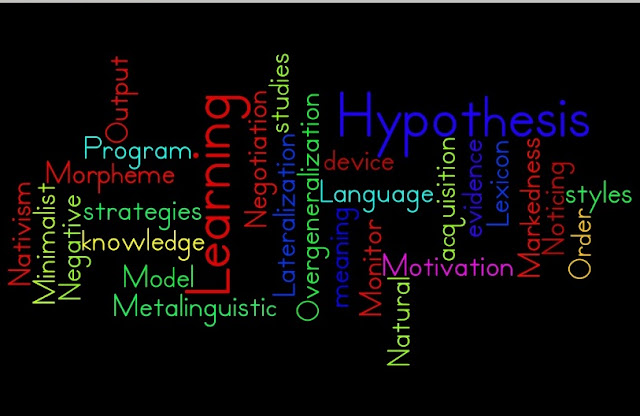Parsing
The real-time subconscious analysis of the syntactic structure of input in order to comprehend it
Performance
The use of the underlying linguistic competence to produce language output
Positive evidence
Input which illustrates correct use of language
Poverty of the stimulus
The claim that the input received is not sufficient to account for language competence, and that there must therefore be some innate capacity
Procedural knowledge
Knowledge of how to do something, such as the ability to use a language, with a degree of automatization acquired through practice that reduces the need for attention
Processing
The real-time subconscious parsing and extraction of meaning from input
Recast
A reformulation of an incorrect utterance which provides the correct from without focusing on it explicitly
Repair
Overcoming potential breakdowns in communication
Restructuring
The reorganisation of the mental representation of knowledge
ScaffoldingThe provision of support by a teacher or other expert user to facilitate a learner’s production
Schema
The mental representation of a situation, topic or event which determines our expectations and influences our understanding of new information
Sociocultural theory
The belief that all learning is an essentially social process grounded in sociocultural settings such as the school and the workplace
Top-down processing
The understanding of meaning through pre-existing knowledge of content, context and culture
Transfer
The influence, either positive or negative, of the L1 on the acquisition of the L2
Ultimate attainment
The end state where a learner’s L2 attainment stops developing
Universal Grammar
A linguistic framework which claims that all languages share a set of underlying principles and that innate knowledge of these enables acquisition
Uptake
The adoption by a learner of the correct form provided in a recast
Variabilty
Lack of consistency in the accuracy of a learner’s language production
Wernicke’s area
A region of the left frontal lobe of the brain associated with understanding spoken language
The real-time subconscious analysis of the syntactic structure of input in order to comprehend it
Performance
The use of the underlying linguistic competence to produce language output
Positive evidence
Input which illustrates correct use of language
Poverty of the stimulus
The claim that the input received is not sufficient to account for language competence, and that there must therefore be some innate capacity
Procedural knowledge
Knowledge of how to do something, such as the ability to use a language, with a degree of automatization acquired through practice that reduces the need for attention
Processing
The real-time subconscious parsing and extraction of meaning from input
Recast
A reformulation of an incorrect utterance which provides the correct from without focusing on it explicitly
Repair
Overcoming potential breakdowns in communication
Restructuring
The reorganisation of the mental representation of knowledge
ScaffoldingThe provision of support by a teacher or other expert user to facilitate a learner’s production
Schema
The mental representation of a situation, topic or event which determines our expectations and influences our understanding of new information
Sociocultural theory
The belief that all learning is an essentially social process grounded in sociocultural settings such as the school and the workplace
Top-down processing
The understanding of meaning through pre-existing knowledge of content, context and culture
Transfer
The influence, either positive or negative, of the L1 on the acquisition of the L2
Ultimate attainment
The end state where a learner’s L2 attainment stops developing
Universal Grammar
A linguistic framework which claims that all languages share a set of underlying principles and that innate knowledge of these enables acquisition
Uptake
The adoption by a learner of the correct form provided in a recast
Variabilty
Lack of consistency in the accuracy of a learner’s language production
Wernicke’s area
A region of the left frontal lobe of the brain associated with understanding spoken language
Original definitions and selection of terms © 2013 Anglo-Hellenic Teacher Training
References
VanPatten, B. & Benati, A. (2010) Key Terms in Second Language Acquisition. London: Continuum.
VanPatten, B. & Williams, J. (eds.). (2007) Theories in Second Language Acquisition: An Introduction. London: Routledge
Doughty, C. and Long, M. (eds.) (2003) Handbook of second language acquisition (2nd edition) Oxford: Blackwell.
Mitchell, R., Myles, F. & Marsden, E. (eds.). (2012) Second Language Learning Theories (3rd Edition) London: Routledge
Saville-Troike, M. (2012) Introducing Second Language Acquisition (2nd edition) Cambridge: Cambridge University Press





